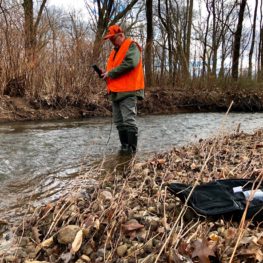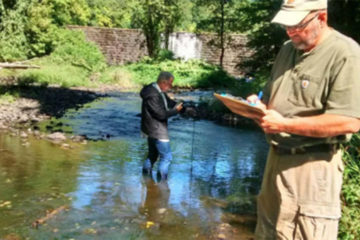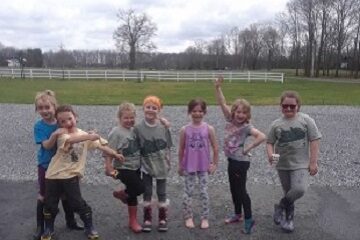 It’s cold outside but the lab is warm as I watch our volunteer carefully go through the process of calibrating the equipment we’ll be using once we are streamside. This routine of prepping the supplies and instruments is serious but exciting because it means we’ll be out soon checking the quality of water in nearby streams.
It’s cold outside but the lab is warm as I watch our volunteer carefully go through the process of calibrating the equipment we’ll be using once we are streamside. This routine of prepping the supplies and instruments is serious but exciting because it means we’ll be out soon checking the quality of water in nearby streams.
The streams we monitor have become familiar, we know what they look like, the plants that grow along side them, the depth, width and if there is a road or bridge that crosses them. We know if there’s typically a lot of trash along the banks or if there is a farm nearby or a manufacturing facility up stream. We know from years of testing which streams are suffering from pollution, which streams no longer have certain fish or little critters living in them. We also know, which streams are flowing with safe clean water, providing wildlife with all it needs to survive.
What we don’t know is if anything has changed since the last visit. Was there a manufacturing spill upstream, did the road salt from the last snowstorm drain off of the overpass, did a recent rainstorm carry fertilizer and herbicides from the lawns and farms nearby, did someone dump something down the sewer instead of disposing of it properly?
Our volunteer citizen scientist organizes the gear in the trunk of his car and we jump inside, off to the first of five sites. Bundled up in coats, reflective vests and knee-high rain boots, we’re prepared to walk into the stream to do the job right. We trek down the bank with a full backpack and clipboard. He explains each step of the process, carefully using, cleaning, and storing the equipment as we measure, sample, record and observe. Consistency, accuracy and precision provide reliable data and samples for the lab.
We repeat the routine at another four sites, dealing with various obstacles between the car and the stream including washed out stream banks, swaths of invasive thorny shrubs and flooding. I’m astonished, as we make our way into these remote sites in the middle of rural wooded areas, how much trash is strewn along the banks, caught between the rocks and hanging from the low branches of trees and shrubs. It’s everywhere. We grab what we can as we make our way to each site.
The day isn’t over when we return to the lab house here at Fairview Farm. There’s equipment to unload and store, samples to be processed, data to be recorded, boots to be cleaned and a late lunch to eat. The work is rewarding however, and a day outside is always invigorating.
We’re tired but have what we need, scientific data collected and logged providing us with a holistic understanding of the water we rely on to live.



